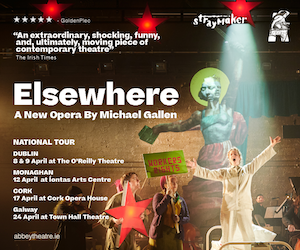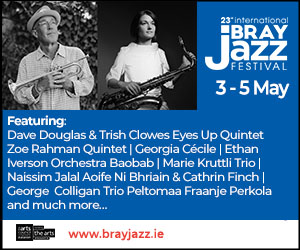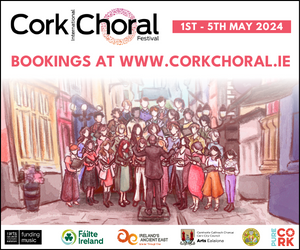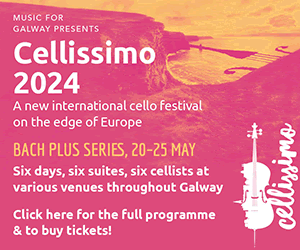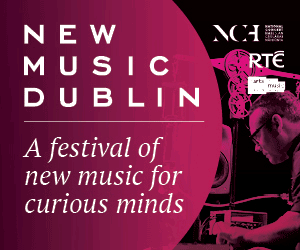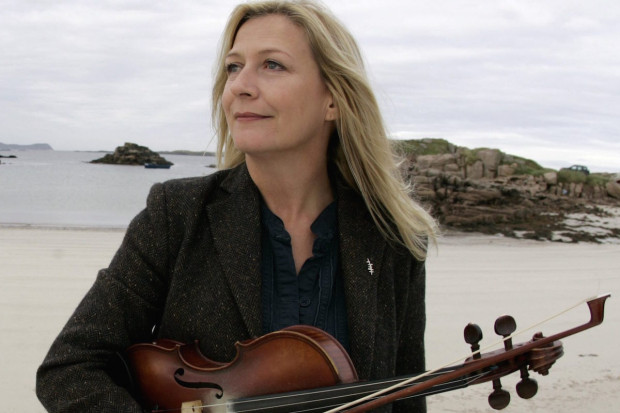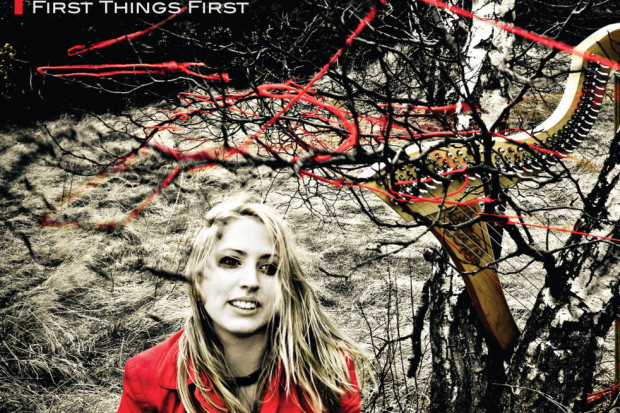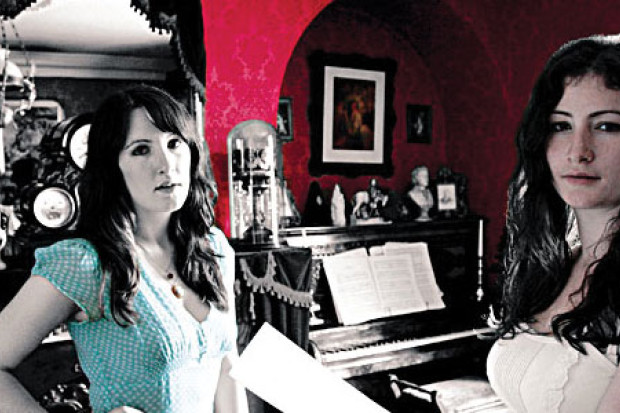Humpty Dumpty and Acoustic Bicycles
‘When I use a word,’ Humpty Dumpty said, in rather a scornful tone, ‘it means just what I choose it to mean – neither more nor less. ‘The question is,’ said Alice, ‘whether you can make words mean so many different things.’ ‘The question is,’ said Humpty Dumpty, ‘which is to be master — that’s all.’
When I first took an interest in Irish music in the late 50s and early 60s, it was ‘the ballads’ that attracted me. Unaware of the complications the future would bring, I happily learned and sang any ‘ballads’ I could find, from ‘Down by the Liffeyside’ to ‘The Banks of the Ohio’, and everything in between. But gradually realising that, whatever chance I had of being any kind of Irish ballad-singer, I could never be anything but an imitation English or American one, I concentrated on Irish material (with the odd ‘foreign’ item that I couldn’t resist — I wasn’t that dogmatic). While involved in this activity, I had an unarticulated but clear idea of what was meant by the word ‘ballad’. Unarticulated because I had never had to think about it, but clear enough because pretty soon I recognised a contradiction between my understanding of the word and the meaning that was increasingly being accorded it.
As the sixties wore on, and one couldn’t throw a stone over a wall without hitting one of the cabaret acts known as ‘ballad-groups’, I found I could no longer use the word to describe the songs and music I was interested in; it had taken on a new meaning. So, along with many of my contemporaries, I abandoned the word and embraced the term ‘folk’ in its place – ‘folk-song’, ‘folk-singer’, ‘folk-music’. Soon that term in its turn became devalued — appropriated by the entertainment industry for soloists who performed their self-penned songs to their own acoustic accompaniment. Almost overnight, it seemed, an expression with an agreed, centuries-old meaning, had come to mean something quite different.
And so we shifted again. ‘Folk-music’ was jettisoned and ‘traditional’ adopted in its stead. Now we are to understand that ‘traditional’ no longer means what we understood it to mean. The word has been commandeered by Rossa Ó Snodaigh to signify a mere style of presentation, and those who fancied themselves followers of traditional music must now use the term ‘pure-traditional’ instead. They must, in other words, accept for their appellation the ‘p’ word, which is never used except by those who are not traditional musicians, never applied to anyone but traditional musicians and never wielded except as a pejorative term.
Rossa Ó Snodaigh’s article (in the March/April issue of the JMI) makes fascinating reading. His lack of comprehension of already-existing terms, and his illusion that he can coin new ones and have them accepted, are breath-taking. A core feature of his piece is the following table of terms, which he assumes to be self-evident and uncontestable:
PURE TRADITIONAL
Séamus Ennis
Patsy Tuohey
Tony MacMahon
Noel Hill
Seamus Tansey
Michael Tubridy
Johnny Doran
Martin Hayes
Michael Coleman
John Doherty
TRADITIONAL
The Bothy Band
Altan
Dervish
Lúnasa
Danú
Dé Danann
Planxty
Solas
Lia Luachra
Nomos
NUA TRADITIONAL
The Chieftains
The Horslips
Stockton’s Wing
Moving Hearts
Kíla
Deiseal
Davy Spillane
Sin É
Mícheál Ó Súilleabháin
Cool Finn
This absurd exercise in classification demonstrates solely that its author has no conception of the meaning of words, in particular the word ‘tradition’ — but in this, of course, he has plenty of company.
We have seen the same transitions before. Once upon a time ‘bike’ meant a machine propelled by the leg-power of its rider, and ‘guitar’ meant a wooden instrument in which the sound was amplified solely by the sound-box. To indicate their motorised/electrified versions you had to use qualifiers — ‘motor-bike’ and ‘electric guitar’. Soon the users of these devices arrogated the basic terms to themselves and foisted the necessity to use qualifying terms on the original objects and their users, and so we got ‘push-bike’ and ‘acoustic guitar’. ‘Traditional singing’ once meant only one thing. Now greater precision requires the use of the term ‘unaccompanied traditional singing’ to mean the same thing, as if there were any other kind. This kind of semantic vandalism can only occur when the meaning of a word is unknown or ignored and it is treated as a rootless, meaningless label. This is clearly the case here. The terms ‘pure traditional’, ‘traditional’ and that ugly neologism ‘nua traditional’ plainly mean no more to Ó Snodaigh than marketing genres, the labels an uncomprehending record-shop owner might devise. Apparently his own experience of being lumbered with labels has given him no occasion to reflect on their nature.
The business of nomenclature is not unimportant. I believe that it, and it alone, is what is behind the 90s brouhaha between the self-proclaimed ‘progressives’ and the progressive-proclaimed ‘purists’. Traditional music is now trendy; it has a ‘cool’ cachet. Many people want to be associated with that ‘coolness’ but can’t bring themselves to like it, or more accurately aren’t willing to put in the work required to appreciate an unfamiliar music. And in Ireland, to most people, Irish music is unfamiliar. In parts of Clare and Kerry, for example, people use the word ‘music’, unadorned, to mean Irish music. In the rest of the country, in the rest of Ireland, one finds the term ‘Irish music’ is seemingly necessary. This is so commonplace that few find it bizarre. It is a relic of the inferiority complex that has bedevilled life in Ireland since it was a colony, and has produced a plethora of titles with ‘Irish’ in the name. In Ireland the terms ‘Farmer’s Association’ or ‘Aviation Authority’ ought to be sufficient to identify those Irish organisations, but not so — there are eight or nine pages in the telephone directory of bodies who feel that they are not sufficiently identified without the word ‘Irish’ in their title. Anyway, those who want to partake in the trend of liking traditional music, but find they don’t actually like it, are delighted to be presented with something, labelled ‘traditional music’, which they do like, astutely provided by a coalition of bandwagon-jumpers and the boys and girls of the marketing departments. From many conversations with traditional singers and musicians, I have come to the conclusion that what really got up their noses in the 80s and 90s was not the music being made by the ‘progressives’, but their arrogant and/or ignorant insistence on applying the word ‘traditional’ to it. Players of traditional music are resentful of their name being appropriated for something else. They mostly didn’t give a toss what other musicians play, that was their own business, but they resented the theft of their name.
At this point it might be helpful to state the meaning of the word ‘traditional’, not just my understanding of it but the until-recently unquestioned meaning.
Traditional music is music that has been ‘handed on’, from earlier generations especially, and also from contemporaries. Irish traditional music is music that has been transmitted in this way in the Irish context. Irish traditional music differs from that of other countries in its content, but not in its process of transmission. The traditional music of our times differs also from that of two centuries ago, and from that of two centuries hence, in its content, but not in its process. By definition, the traditional music of later periods must be rooted in that of earlier periods. The word ‘traditional’ itself betokens nothing beyond the mode of transmission. To discover the other characteristics of such music it is necessary to listen to performers who have received their music in that manner, and who continue to perform it in a style that does not preclude it from being accepted by their musical peers. The content (the individual songs, tunes, dances and styles) of the tradition changes over time. Pieces are lost by simply not being performed, because no one chooses to perform them. Pieces are retained by being performed. The oldest pieces must obviously possess some quality that enables their survival. Whenever I encounter a performance of ‘Barbara Allen’, ‘Limerick’s Lamentation’ or ‘The Priest in his Boots’, it gives me a rush to enjoy pieces that are so strong that they have exercised their hold for several centuries.
Now we come to the crucial, least-acknowledged point — how is material added to the tradition? Well, there are no committees of ‘the folk’ convened to create their folk music. Every song, tune and dance is originally the work of an individual, who then performs the piece for their musical community. Once it has been introduced to that community their composition is subject to the same process as every other item in the tradition. If it is accepted — if it fits in — it becomes part of the tradition, and remains there as long as any member of the traditional musical community (a very diffuse, inclusive group) chooses to perform it. Two examples of newly created pieces spring to mind, the ‘Tam Lin Reel’ and ‘The Clumsy Lovers’, also a reel, and both, I believe, created in Scotland. To hear the ‘The Clumsy Lovers’ played on the chanter by Conor McKeon, or the ‘Tam Lin Reel’ played by the Michael Sexton Céilí Band for the last figure of the Lancers set is to experience thrilling, modern music.
Traditional musicians have typically considered it an honour to have a composition of theirs so accepted, and would never even think of restricting its performance. The whole process operates to stabilise style and content, and admit change in a very controlled way, but the rate of change is too slow for those accustomed to the novelty-driven fashion-waves of the pop charts. One only has to be acquainted with people of different ages within traditional music circles to be aware that older musicians are fiercely critical of aspects of present-day practice that are unquestioningly accepted as kosher by younger players. And I’m not talking here about such exotica as Balkan rhythms or bands where the melody instruments are out-numbered by the rhythm section. The ‘Irishness’ of set-dancing, of polkas, of Donegal fiddle music and of Dublin street song; the admissibility of the harpers’ music; the traditional credentials of the banjo and of the accordion; these have all been very vexed questions in traditional circles in the recent past, and in many minds are still far from settled. It might comfort the partisans of guitar, bouzouki and mandolin, disappointed at the lack of ready acceptance of their favoured instruments, if they realised that they are at the back of a queue of other influences awaiting acceptance. It is in no individual’s power to grant or withhold such acceptance. The jury is the entire traditional music community — musicians, singers, dancers and audience.
It must surely be obvious from the above that nobody can compose traditional music. Individuals compose, and if the composition is accepted, retained and transmitted, it is on its way to becoming traditional. If you consider this a good thing then you will try to ease the process by creating your piece in such a style that it is likely to fit in and gain acceptance. I was commissioned a while ago to create a new set, i.e. a set of dance figures. It was to be named ‘The Limerick Tumblers’, and it was first danced in that city. It is based on the polka sets of Munster, but contains a generous helping of original dance movements not found in any other set. I fancied that, if it were to be taken up anywhere, local chauvinism would lead to it being adopted in Limerick. But not so — it is in fact being danced in Pittsburgh and other locations in America. Such are the vagaries of tradition! Rossa Ó Snodaigh’s band Kíla creates original music in a style that is unquestionably Irish and unquestionably novel. They cannot seriously expect it to be considered traditional, and it is a mystery to me why he feels the need to use the word to describe it, except that he and they are also trading on the ‘traditional’ label. The simple test is there — if it is indeed traditional music, who in the tradition has taken it up, or is remotely likely to take it up?
Ó Snodaigh is seemingly upset at Tony MacMahon’s use of the expression ‘mongrel music’ to describe music like theirs. I can’t understand why this should be considered an insult, by either its giver or its receiver. Irish music is mongrel music par excellence, but we happen to know what went into its breeding, and, cross-bred though it is, it is from a restricted, well-documented gene-pool. A dog can be a mongrel while being recognisably a terrier, or a sheepdog, or whatever. Introduce a chihuahua or an afghan to either of these mixes and you will get a very mis-shapen thing indeed. So it is with Balkan rhythms, rock-and-roll instrumentation, hyper-speed and much else that has been tried in the past couple of decades. Most of the developments that outsiders have tried to introduce have been rejected because they not only don’t fit in, they actually compromise the music. Someone who is literate in the music and who is accustomed to enjoying the complex rhythms of a reel or jig can be driven to despair to hear those rhythms obscured or strait-jacketed by syncopated accompaniment.
Those who come from pop music where such rhythms are the point, and who are unable to discern the rhythms of traditional music, cannot understand the objections and automatically assume that it is just the ‘purists’ being ignorant and obscurantist again. The opposite is actually the case. An experienced person listening to traditional music can resolve the eight notes per second of a reel into melody, and can assimilate song-airs that extend to a minute or more for a single verse, in both cases recognising and appreciating the variations introduced with each repetition of the tune. This is a level of musical skill that is un-called for in the world of pop or rock music, where easily apprehended rhythms and simple, short melodies are the staple fare. Most of the people attracted to ‘traditional music’ from pop and rock in the past twenty to thirty years have actually been attracted by non-traditional features adopted from other musics — the orchestrations of Seán Ó Riada; the rock-and-roll drive of The Bothy Band; the rock-and-roll of Horslips, and so on. Some penetrated the gimmicks to find traditional music; most remained at the way stations, telling themselves they had reached the destination, and venting their unease by belittling those who had elected to go all the way.
In the words of Humpty Dumpty, the question is ‘who is to be master?’ Traditional musicians will play their music whether they get paid to or not. Some have become so accomplished and popular that they do get paid, a few reasonably well, or well enough to excite emulation for purely commercial reasons. We now see the phenomenon of bands being created simply to cash in, with no musical imperative whatever. Louis Walsh was at one time involved in trying to get a traditional band off the ground, and Ballyfermot College actually has a course where one can be taught (so they imagine) how to set up a traditional band. Unless they start with people who are already traditional players, such ventures have no hope of creating anything other than pastiche groups, but ones that could certainly sell recordings to the ignorant. Marketing is everything.
Other groups have been set up — Horslips is the prime example — that have no connection whatsoever to traditional music but which, again, can exploit a market that is disposed to purchase product on the simple assurance that it is traditional in some shape or form. In both cases money is spent on music that might have been spent on genuine traditional music. The entertainment business, surely the most wanton of harlots, wants to be master, and will annex, appropriate and ultimately devalue anything and everything in the name of profit.
If anyone has stayed with me this far, I hope I have convinced you that the expressions ‘pure traditional’ and ‘nua traditional’ have no meaning. Music can become traditional, but traditional music cannot be made, instantly or to order.
In conclusion, I will not refrain from nit-picking the remainder of Rossa Ó Snodaigh’s article. Firstly, Seán Ó Riada did not revolutionise traditional Irish music. He composed a few superb tunes and gave new life to many more old ones, and he bears the credit for up-grading the bodhrán from a rarely heard regional curiosity to its present degree of popularity, and that is really all. His significant project, the creation of a new style of ensemble playing, has not been replicated outside Ceoltóirí Cualann and the Chieftains. And the céilí bands, which he so despised, are back with a vengeance — there have never been so many of them. Later bands, like Planxty and The Bothy Band, for example, owe their musical inspiration more to the likes of Sweeney’s Men, The Johnstons, The Dubliners and — breath it softly — The Clancy Brothers and Tommy Makem.
Next, his suggested parallel between South American musics and Irish traditional music is spurious. I do not know the root meanings of ‘flamenco’, ‘tango’ or ‘bossa’, but I am willing to speculate that they do not carry any such prescriptive meaning as does the word ‘traditional’. ‘New reggae’ or ‘new hip-hop’ might be valid labels for emerging musical genres. ‘Nua traditional’ can not be. Music is either traditional or it is not.
He says that the Bothy Band’s music had a sense of inclusion. For who? Certainly not for those followers of traditional music for whom much of that band’s music was more akin to rock.
He uses the expression ‘standing in one place for years’ to characterise the musical opinions of Tony MacMahon. This is the favourite jibe of those ignorant of the music — ‘it all sounds the same’. As I have outlined above, the music has in fact changed radically over the past century, and is still changing, but in ways and in directions that the soi-disant ‘progressives’ are not interested in.
He attributes to the Bothy Band’s music the quality of duendé. This is a Spanish word with which I am familiar, and it signifies something other than high energy or pace. It embraces connotations of ‘passion’, ‘integrity’ and ‘truth’. In my view, Tony MacMahon can pack more duendé into a single bar of music than most of Rossa’s ‘nua traditional’ heroes can manage in a whole concert.
Finally, he ends, almost, on a note that I do agree with. He says that his chosen style is ‘a style completely unto itself and should not be assessed with the purist values in mind’. I couldn’t agree more. But why, if he believes this, does he insist on retaining the ‘traditional’ tag in any form. Traditional music ‘has always sought for new ways to express itself’ and always will, but its development will always be driven from within, and at its own chosen speed. Traditional musicians, and only they Rossa, are still playing traditional music. Get your own name.
Published on 1 May 2001
Terry Moylan is a researcher and archivist with Na Píobairí Uilleann. He is the author of The Age of Revolution in the Irish Song Tradition 1776-1815.







